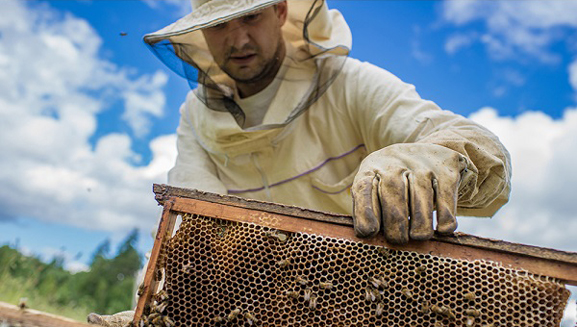
ENGINES & NATURE: THE BIODIVERSITY WITHIN FPT INDUSTRIAL
Over the years,FPT Industrial has chosen to put its efforts on environmental sustainability, aiming to constantly reduce the impacts of production processes on the surrounding nature. In fact, the entire CNH Industrial group - recently named again as one of the 24 most sustainable companies in the world in The Dow Jones Sustainability Indices - has been interested in environmental issues, establishing key principles including prevention and conservation with short, medium, and long-term goals. The topics on which the group has paid more attention are energy, natural resources, raw materials, special substances, polluting emissions, waste and biodiversity.
It's on the latter that FPT Industrial has concentrated part of its efforts. With the support of the scientific community, and in particular the Department of Life Sciences and System Biology at the University of Turin, FPT Industrial promoted the development and the application of the Biodiversity Value Index (BVI) in some of its plants. Considering a radius of about five kilometers from production centers, the index calculates the biodiversity level of that particular area, also identifying possible measures to improve the existing ecosystem. Biodiversity is calculated by considering two complementary factors: the API, or Anthropic Pressure Index, generated by industrial, agricultural, urban and infrastructure activities within the area; and BI, Biodiversity Index, measured using the most common biological indicators for aquatic and terrestrial ecosystems
The method has already been applied in FPT Industrial's French plant in Bourbon Lancy, Sete Lagoas in Brazil, and Foggiain Italy. In the Burgundy region, in Bourbon Lancy, there were already excellent levels of biodiversity: nevertheless, further measures were taken. In fact, shrubs and hedges have been planted in the site, while trying to contain the invasive and non-native species of the plant at the same time. In 2014, green areas with illustrated panels highlighted the importance of environmental issues. In the site, besides FPT's traditional production, there is one other: honey, and in 2016 honeycombs produced 13 kg of honey. This is one of the activities that are also told to children who visit the plant with educational projects promoted by their schools. And there is more: in July 2015, the plant organized an open day to showcase the company's environmental policy: over 4 thousands visitors attended, a very high number considering that the city of Bourbon Lancy is home to just over 5 thousands people.
In Italy, the Foggia plant launched the BVI methodology in 2014, soon becoming the first Italian plant for biodiversity levels, and second in the world after Bourbon Lancy. In the Apulian site of FPT Industrial, which is close to sensitive areas such as Bosco dell'Incoronata and Valle del Cervaro, about three hundred trees have been planted within the "Urban Forestation" project. Among these are fig, citrus, pomegranate, and olive trees, while in the future there will be vine and carob trees planted, always respecting local biodiversity. The aim is to promote the grafting of native plants and shrubs in the region to improve landscape and diversity and to raise people's awareness about the increasing level of CO2in the atmosphere and climate change.